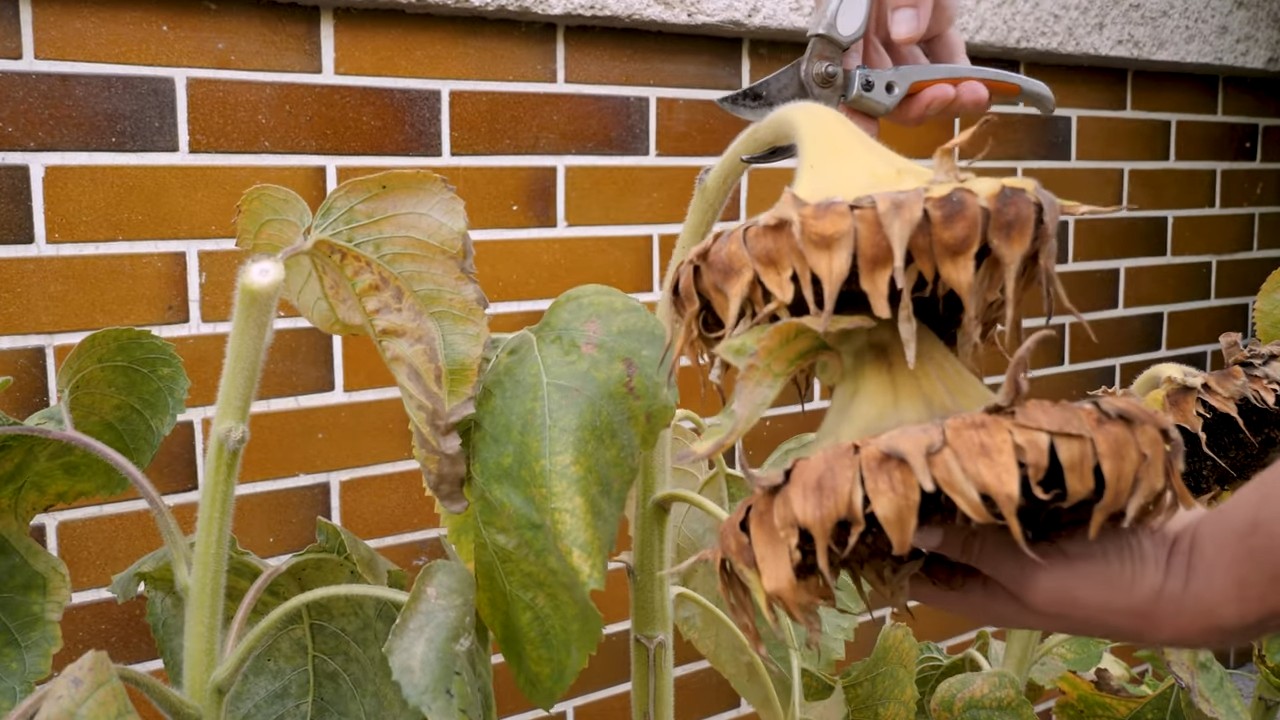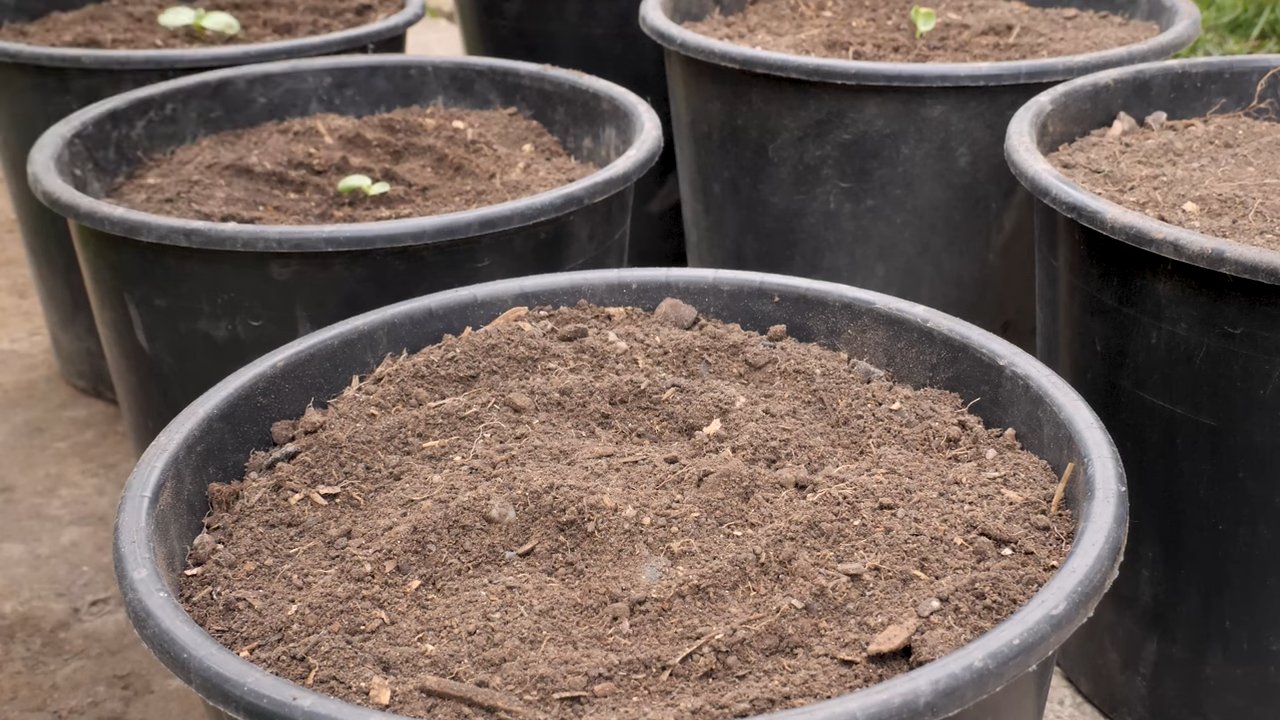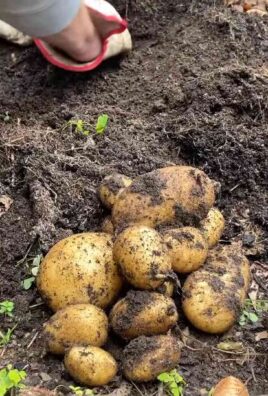Vertical sunflower gardening: sounds like something out of a fairytale, right? Imagine a wall of vibrant, sunny faces greeting you every morning! Well, it’s not just a dream; it’s a totally achievable DIY project that can transform your outdoor space, no matter how small it is. Sunflowers, with their towering presence and cheerful disposition, have been revered for centuries. From ancient civilizations using them for food and medicine to Van Gogh immortalizing them on canvas, these beauties have always held a special place in our hearts.
But let’s be honest, not everyone has acres of land to dedicate to these sun-loving giants. That’s where the magic of vertical gardening comes in! I’m going to show you how to create a stunning vertical sunflower gardening display, even if you only have a balcony or a tiny patio. This isn’t just about aesthetics; it’s about maximizing space, adding a touch of nature to urban environments, and enjoying the satisfaction of growing your own food (sunflower seeds, anyone?). Plus, it’s a fantastic way to attract pollinators and create a buzz-worthy conversation starter. So, grab your gardening gloves, and let’s get started on this exciting DIY adventure!

DIY Vertical Sunflower Garden: Reaching for the Sky!
Hey there, fellow gardening enthusiasts! I’m so excited to share this project with you – a DIY vertical sunflower garden! Sunflowers are just the happiest flowers, and growing them vertically is a fantastic way to save space, add a unique visual element to your garden, and even deter some pests. Plus, it’s a really fun and rewarding project. Let’s get started!
What You’ll Need
Before we dive in, let’s gather all the necessary materials. This will make the process much smoother.
* Heavy-duty Landscape Fabric: This will form the pockets for our sunflowers. Make sure it’s thick and durable to hold the weight of the soil and plants. I recommend getting at least 6 feet wide.
* Sturdy Wooden Frame: You’ll need a frame to support the landscape fabric. You can build one yourself using 2×4 lumber, or repurpose an old pallet (make sure it’s untreated wood!). The size will depend on how large you want your vertical garden to be. I’m going for a 4ft wide by 6ft tall frame.
* Heavy-duty Staples or Screws: To attach the landscape fabric to the wooden frame. A staple gun with heavy-duty staples works great, but screws and washers are even more secure.
* Potting Soil: A good quality potting mix is essential for healthy sunflower growth. Don’t use garden soil, as it can compact and not drain well in containers.
* Sunflower Seeds: Choose a variety of sunflowers that are suitable for container growing. Dwarf varieties like ‘Teddy Bear’ or ‘Little Becka’ are excellent choices. I’m using a mix of ‘Teddy Bear’ and ‘Russian Mammoth’ for some height variation.
* Watering Can or Hose: For watering your sunflowers.
* Measuring Tape: To ensure accurate spacing of the pockets.
* Scissors or Utility Knife: For cutting the landscape fabric.
* Gloves: To protect your hands.
* Optional:
* Fertilizer (slow-release or liquid)
* Chicken wire (to protect seedlings from birds)
* Drip irrigation system (for easier watering)
* Wood sealant (to protect the wooden frame)
Building the Frame
This is the foundation of our vertical garden, so let’s make sure it’s solid!
1. Measure and Cut the Lumber: If you’re building your own frame, measure and cut the lumber to the desired dimensions. For my 4ft x 6ft frame, I needed two 6ft pieces and two 4ft pieces.
2. Assemble the Frame: Use screws to assemble the frame. Make sure the corners are square and the frame is sturdy. I like to use wood glue in addition to screws for extra strength.
3. Seal the Wood (Optional): If you want to protect the wood from the elements, apply a wood sealant. This will help prolong the life of your frame. Let it dry completely before moving on.
4. Pallet Alternative: If you’re using a pallet, inspect it carefully for any loose nails or splinters. Reinforce any weak spots with screws.
Creating the Planting Pockets
This is where the magic happens! We’ll be creating pockets in the landscape fabric to hold the soil and sunflowers.
1. Cut the Landscape Fabric: Cut a piece of landscape fabric that is slightly larger than the frame. This will allow you to wrap it around the back and secure it. I cut mine to 5ft wide and 7ft tall.
2. Fold and Staple the Top Edge: Fold the top edge of the landscape fabric over a few inches and staple it to the top of the frame. This will create a strong, secure attachment point.
3. Attach the Sides: Pull the landscape fabric taut and staple it to the sides of the frame. Make sure it’s smooth and wrinkle-free.
4. Creating the Pockets: This is where the measuring tape comes in handy. Decide how far apart you want your sunflower pockets to be. I’m spacing mine about 12 inches apart vertically and 18 inches apart horizontally.
5. Mark the Pocket Locations: Use a marker to mark the locations of the pockets on the landscape fabric.
6. Forming the Pockets: For each pocket, cut a square or rectangular piece of landscape fabric. The size will depend on how large you want the pockets to be. I’m using 12 inch by 12 inch squares.
7. Sewing or Stapling the Pockets: Fold the edges of the square inward to create a hem. This will prevent the fabric from fraying. Then, attach the pocket to the main piece of landscape fabric using staples or screws. Make sure the bottom of the pocket is securely attached to hold the weight of the soil. I prefer using screws and washers for this step, as it’s more durable.
8. Reinforce the Pockets: For extra support, you can add an extra layer of landscape fabric to the bottom of each pocket. This will help prevent the pockets from tearing.
9. Repeat: Repeat steps 6-8 for all the remaining pockets.
Planting the Sunflowers
Now for the fun part – planting our sunflowers!
1. Fill the Pockets with Soil: Carefully fill each pocket with potting soil. Don’t overfill them, as you’ll need space for the sunflower seedlings.
2. Plant the Sunflower Seeds: Plant 2-3 sunflower seeds in each pocket, following the instructions on the seed packet. I usually plant them about an inch deep.
3. Water Thoroughly: Water the soil thoroughly after planting. Make sure the water drains well.
4. Protect from Birds (Optional): If you’re worried about birds eating the seeds, cover the pockets with chicken wire until the seedlings emerge.
5. Thin the Seedlings: Once the seedlings have emerged, thin them to one plant per pocket. Choose the strongest, healthiest seedling to keep.
Caring for Your Vertical Sunflower Garden
Sunflowers are relatively easy to care for, but here are a few tips to keep them thriving:
1. Watering: Water your sunflowers regularly, especially during hot, dry weather. The soil should be consistently moist, but not soggy. Check the soil moisture by sticking your finger into the soil. If it feels dry, it’s time to water.
2. Fertilizing: Sunflowers are heavy feeders, so fertilize them regularly with a balanced fertilizer. You can use a slow-release fertilizer at planting time, or a liquid fertilizer every few weeks.
3. Sunlight: Sunflowers need at least 6-8 hours of sunlight per day. Make sure your vertical garden is located in a sunny spot.
4. Support: As the sunflowers grow taller, they may need some support. You can use stakes or twine to help them stay upright. Especially the taller varieties like Russian Mammoth.
5. Pest Control: Keep an eye out for pests like aphids and spider mites. If you see any, treat them with an insecticidal soap or neem oil.
6. Deadheading: Remove any dead or faded flowers to encourage more blooms.
7. Harvesting Seeds: If you want to harvest the sunflower seeds, let the flower heads dry completely on the plant. Then, cut off the heads and rub the seeds out.
Troubleshooting
Even with the best planning, sometimes things don’t go exactly as expected. Here are a few common problems and how to fix them:
* Yellowing Leaves: This could be a sign of overwatering, underwatering, or nutrient deficiency. Check the soil moisture and adjust your watering accordingly. Fertilize the plants if necessary.
* Leggy Growth: This means the plants aren’t getting enough sunlight. Move the vertical garden to a sunnier location.
* Pests: As mentioned earlier, keep an eye out for pests and treat them promptly.
* Pockets Tearing: If the pockets start to tear, reinforce them with extra landscape fabric or replace them entirely.
Enjoy Your Vertical Sunflower Garden!
That’s it! You’ve successfully created your own vertical sunflower garden. Now sit back, relax, and enjoy the beauty of these cheerful flowers. I hope you found this guide helpful and inspiring. Happy gardening! Remember to adjust the spacing and variety of sunflowers to suit your own preferences and space. I can’t wait to see your creations! Don’t forget to share your photos with me!

Conclusion
So, there you have it! Vertical sunflower gardening isn’t just a quirky trend; it’s a game-changer for anyone looking to maximize their space, add a touch of sunshine to their lives, and enjoy the satisfaction of growing their own food and flowers. We’ve explored the ins and outs of this innovative technique, from choosing the right sunflower varieties to constructing your vertical support system and providing the necessary care.
But why is this DIY trick a must-try? Let’s recap. First and foremost, it’s incredibly space-efficient. Whether you have a sprawling backyard or a tiny balcony, vertical sunflower gardening allows you to cultivate these magnificent blooms without sacrificing precious ground space. This is particularly beneficial for urban dwellers or those with limited gardening areas.
Secondly, it’s visually stunning. Imagine a wall or trellis adorned with vibrant, towering sunflowers, creating a living tapestry of color and texture. It’s a guaranteed conversation starter and a beautiful addition to any outdoor space. Beyond aesthetics, vertical gardening promotes better air circulation around the plants, reducing the risk of fungal diseases. It also makes harvesting easier, as you don’t have to bend down to reach the blooms.
Now, let’s talk about variations. While we’ve focused on using trellises and fences as support structures, feel free to get creative. You could repurpose old pallets, construct a DIY tower using bamboo poles, or even utilize hanging baskets for smaller sunflower varieties. Consider companion planting to enhance your vertical garden. Nasturtiums, for example, can attract beneficial insects and deter pests, while basil can improve the flavor of nearby vegetables.
For those seeking an extra challenge, try growing different sunflower varieties in your vertical garden. Experiment with dwarf sunflowers for a more compact display, or opt for branching varieties that produce multiple blooms per plant. You can even try growing sunflowers with different colored petals, creating a vibrant and diverse vertical garden.
Remember, the key to successful vertical sunflower gardening is proper planning and consistent care. Choose a sunny location, provide well-draining soil, and water regularly. Don’t forget to fertilize your sunflowers to encourage healthy growth and abundant blooms.
We wholeheartedly encourage you to give this DIY trick a try. It’s a rewarding and fulfilling experience that will transform your outdoor space and bring joy to your life. And most importantly, don’t be afraid to experiment and adapt the techniques to suit your specific needs and preferences.
Once you’ve embarked on your vertical sunflower gardening journey, we’d love to hear about your experience. Share your photos, tips, and challenges in the comments section below. Let’s create a community of vertical gardening enthusiasts and inspire others to embrace this innovative technique. Happy gardening!
Frequently Asked Questions (FAQ)
What types of sunflowers are best for vertical gardening?
The best sunflowers for vertical gardening are typically dwarf or smaller varieties that won’t become too heavy or unwieldy for the support structure. Some excellent choices include:
* **’Teddy Bear’**: A popular dwarf variety with fluffy, golden-yellow blooms.
* **’Little Becka’**: Another compact variety with bi-colored petals (red and yellow).
* **’Sunny Smile’**: A cheerful, single-stemmed dwarf sunflower.
* **’Pacino Gold’**: A very early blooming dwarf variety that is great for containers and vertical gardens.
Taller varieties can be grown vertically, but they require stronger support and may need to be pruned to prevent them from becoming too top-heavy. Consider using sturdy trellises or fences for these larger sunflowers.
How do I build a support structure for my vertical sunflower garden?
There are several options for building a support structure, depending on your space and budget:
* **Trellis**: A simple wooden or metal trellis is a great option for supporting sunflowers. Make sure the trellis is sturdy enough to handle the weight of the mature plants.
* **Fence**: A chain-link or wooden fence can also be used as a support structure. Simply plant the sunflowers along the base of the fence and train them to grow upwards.
* **DIY Tower**: You can create a DIY tower using bamboo poles, wooden stakes, or even repurposed materials like pallets. Secure the poles or stakes together to form a tower shape and provide support for the sunflowers as they grow.
* **Hanging Baskets**: For smaller sunflower varieties, hanging baskets can be a fun and creative option. Choose baskets that are large enough to accommodate the root systems of the sunflowers.
Regardless of the support structure you choose, make sure it is securely anchored to the ground to prevent it from tipping over in strong winds.
What kind of soil is best for vertical sunflower gardening?
Sunflowers thrive in well-draining soil that is rich in organic matter. A good soil mix for vertical sunflower gardening should include:
* **Potting soil**: Provides a light and airy base for the soil mix.
* **Compost**: Adds nutrients and improves soil drainage.
* **Perlite or vermiculite**: Enhances drainage and aeration.
Avoid using heavy clay soil, as it can become waterlogged and suffocate the roots of the sunflowers. You can amend clay soil by adding compost and other organic matter to improve its drainage.
How often should I water my vertical sunflowers?
Vertical sunflowers need regular watering, especially during hot and dry weather. Water deeply whenever the top inch of soil feels dry to the touch. Avoid overwatering, as this can lead to root rot.
When watering, aim to water the soil directly, rather than wetting the foliage. This will help prevent fungal diseases. Consider using a soaker hose or drip irrigation system to provide consistent and efficient watering.
Do vertical sunflowers need fertilizer?
Yes, sunflowers benefit from regular fertilization, especially during their active growing season. Use a balanced fertilizer with a ratio of 10-10-10 or 14-14-14. Apply the fertilizer according to the package directions.
You can also supplement with organic fertilizers, such as compost tea or fish emulsion. These fertilizers provide a slow-release source of nutrients and can help improve soil health.
How do I protect my vertical sunflowers from pests and diseases?
Sunflowers can be susceptible to various pests and diseases, including aphids, spider mites, powdery mildew, and rust. To protect your vertical sunflowers:
* **Inspect plants regularly**: Check for signs of pests or diseases and take action promptly.
* **Use organic pest control methods**: Introduce beneficial insects, such as ladybugs, to control aphids and other pests. You can also use insecticidal soap or neem oil to treat infestations.
* **Provide good air circulation**: Proper air circulation can help prevent fungal diseases. Space the sunflowers adequately and prune any overcrowded foliage.
* **Water properly**: Avoid overwatering and water the soil directly to prevent fungal diseases.
* **Remove diseased foliage**: If you notice any diseased foliage, remove it promptly to prevent the spread of the disease.
Can I grow other plants alongside my vertical sunflowers?
Yes, companion planting can be beneficial for vertical sunflower gardening. Some good companion plants for sunflowers include:
* **Nasturtiums**: Attract beneficial insects and deter pests.
* **Basil**: Improves the flavor of nearby vegetables and repels certain pests.
* **Marigolds**: Repel nematodes and other soil pests.
* **Zinnias**: Attract pollinators and add color to the garden.
Avoid planting sunflowers near plants that are susceptible to the same pests or diseases.
How do I harvest sunflower seeds from my vertical garden?
To harvest sunflower seeds, wait until the back of the flower head turns brown and the petals begin to dry and fall off. Cut the flower head from the stalk and hang it upside down in a dry, well-ventilated place for a few weeks to allow the seeds to dry completely.
Once the seeds are dry, you can easily remove them by rubbing the flower head with your hands. Store the seeds in an airtight container in a cool, dry place.
Can I grow sunflowers vertically indoors?
While it’s possible to grow sunflowers indoors, it can be challenging to provide them with the amount of sunlight they need. Sunflowers require at least 6-8 hours of direct sunlight per day. If you don’t have a sunny window, you may need to supplement with artificial grow lights.
Choose dwarf sunflower varieties for indoor growing, as they are more compact and easier to manage. Make sure to provide a sturdy support structure for the sunflowers to climb on.




Leave a Comment